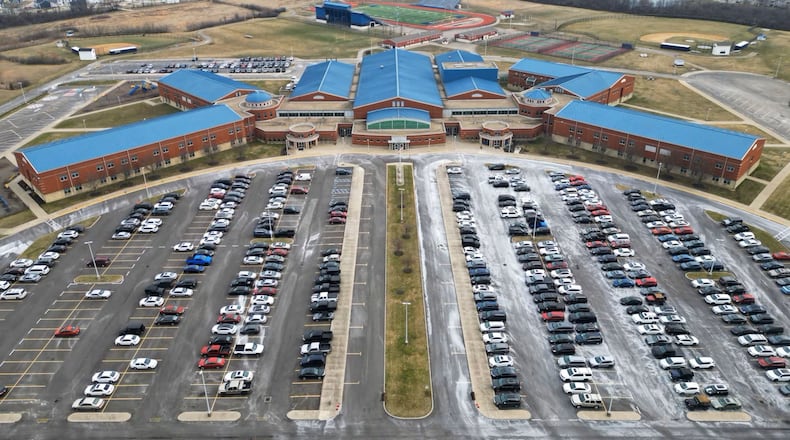Local funding came to the forefront for Monroe Schools, one of the fastest growing in the county, as officials there were relieved to see voters approve a school tax bond issue in November to build a new high school to handle its rising enrollment.
And Butler Tech, which serves all local districts as a career school system, saw millions of dollars in state funds come in for various projects, some of which include historic first-time partnerships with Miami University, Hamilton and Butler County Commissioners as well as with city leaders in Middletown and its regional airport.
Middletown Schools is tackling the complex task of re-districting its elementary schools as it shuffles grades into different buildings going into the 2025-2026 school year.
And the county’s largest school system, Lakota Schools, saw a new leader come on board and the rare loss of a high school principal at Lakota East near the half-way point of the current school year.
And Hamilton Schools leader – Superintendent Mike Holbrook – echoed other local school leaders in saying the end of last school year this spring into this fall’s second half of 2024 saw a welcomed return to norms after the often-tumultuous COVID-19 pandemic years.
Credit: Nick Graham
Credit: Nick Graham
“Hamilton City Schools has had a terrific 2024. The district has returned to normalcy concerning school schedules and regulations. The district also continued successful and robust academic and programming,” said Holbrook, whose district enrolls 9,000 students.
“The Early College Academy, in partnership with Miami University, continues to provide college opportunities to high school students. The district was fortunate to have many additional successes in the fine arts and athletics arenas,” said Holbrook, who will move on from his position after this school year and be replaced by Assistant Hamilton Schools Superintendent Andrea Blevins as part of succession plan announced earlier in 2024.
The leader of the county’s second largest district – the 10,000-student Fairfield Schools – said a return to pre-COVID status quo has seen a less problematic 2024.
“In 2024, our school district made significant progress, despite the challenges posed by the loss of ESSER funding,” said Fairfield Superintendent Billy Smith.
“Our improvement on the state report card reflects the hard work and dedication of our staff and students, ensuring continued success even with reduced resources. We are also proud to have four of our elementary schools recognized in U.S. News & World Report for their excellence in education,” said Smith.
Lakota Schools’ new Superintendent Ashley Whitely, who is finishing up her first half year as head of the 18,000-student school system, said 2024 was marked by “forward momentum for the district.”
“The hard work and dedication of our teachers, staff and students led to significant progress on the state report card, earning the district 4.5 stars. The work and momentum have not stopped with the introduction of new instructional resources for English language arts and math and we’ve increased the number courses offered for our secondary students, including a significant number of college credit plus options,” said Whitely.
But some districts, especially smaller, rural school systems, said the lingering impact of losing federal ESSER funds will continue to hurt into 2025 and perhaps beyond.
Kelly Spivey, superintendent of Edgewood Schools, said: “We have witnessed remarkable resilience from students coming out of the COVID years and how this impacted social emotional learning skills for our students.”
But Spivey added “one of the pressing matters that is being addressed is the loss of the ESSER funds.”
“The impact of losing ESSER funds has been a lifeline for many districts. These funds allowed smaller school districts to survive during the pandemic,” she said.
For Butler County’s only Catholic high school, 2024 was the beginning of the realization of a long-time dream of an on-campus sports stadium and facility.
Earlier this year construction began on a $15 million sports complex at Hamilton’s Badin High School with construction scheduled to be completed in 2025.
Smith echoed many other area education leaders in saying whatever successes or conquered challenges to come in 2025 will only happen with their local communities’ continued support.
“I am so proud of what we do for our students, and we wouldn’t be able to do what we do without so much support from the entire community.”
About the Author

